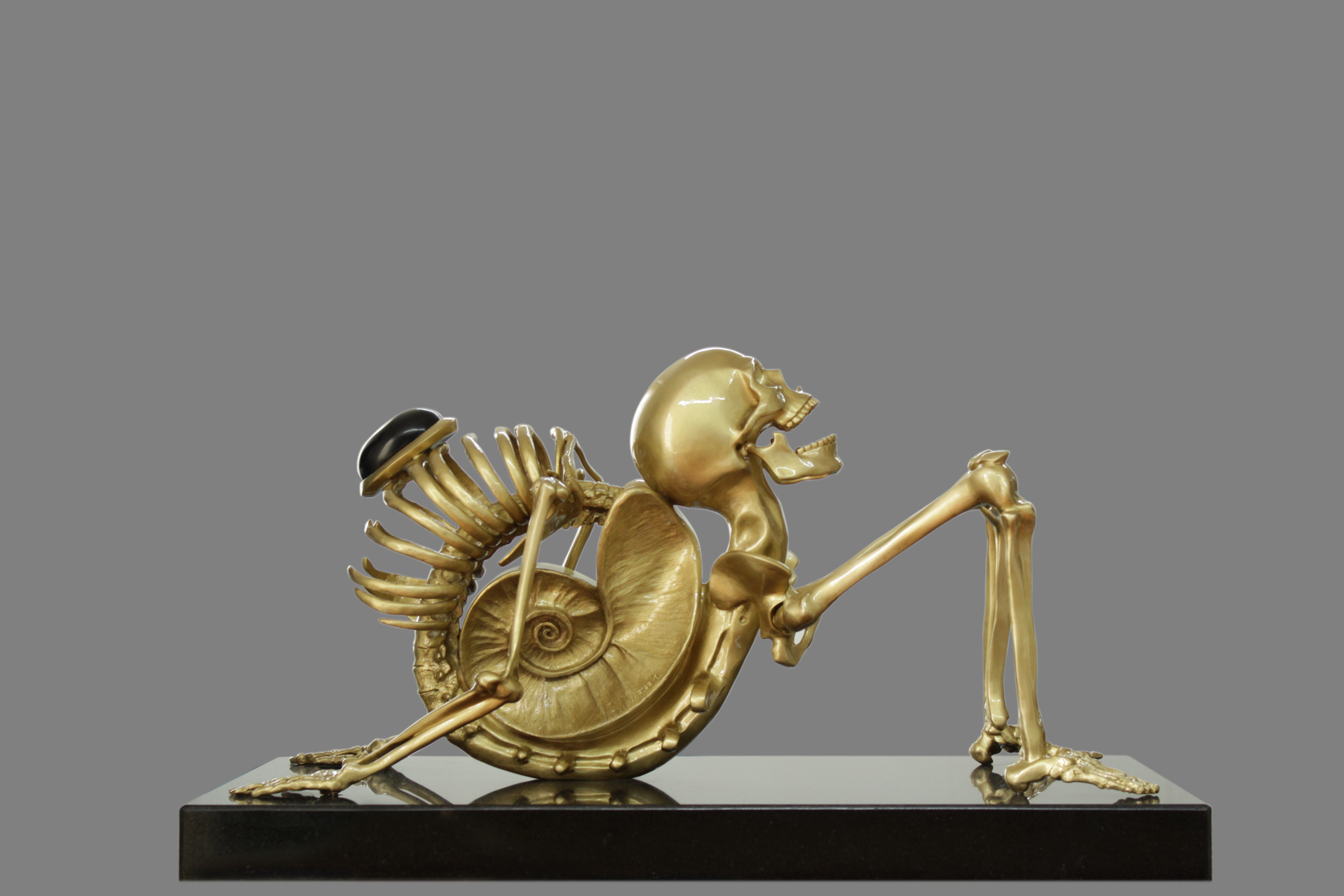
Sor Juana Inés de la Cruz in the Mexican Skull
1 de December de 2022
…follow your shadow in search of your day
those who, with green glasses for spectacles
everything is painted according to their wishes;
than I, more sane in my fortune,
I have in both hands both eyes
and only what I touch I see.
Sister Juana Inés de la Cruz (c.1648-1695)
I decided to write these brief lines about one of the pieces of the series Mexican Skull of Perla Arroyo for two fundamental reasons: because I am pleased to celebrate the production of an artist whom I have always known – a creator since she was a child – and because her work addresses a problem that is not personal, intimate or private but concerns the art situation of our time. His research is historical in nature, exploring the relationship between the conceptual universe of design and mass media and the creative process of three-dimensional art from the manipulation of matter and its creative potential.
I am referring to the materialization of an idea about contemporary sculpture that is born as a digital project, and then transformed into something physical that immediately activates the operation of its agency or the capacity that objects have to produce social responses. This is how I have seen this project born, from a digital image to the
render
from there to 3D printing and then to the integration of other parts modeled with steel cables and plasticine. In the end, the lost wax bronze casting leaves us with nothing more than the various prototypes and twisted fragments that were piled up on the workbench, already replaced by the finished model. There is a place where computer programs are insufficient or at least resist reproducing the intentions of the brain and the artifices of the hand. Perla knows this when she says that all her carvings and modeling end up inscribed in the same system of proportion.
With her work
Sister Juana
Inés de la Cruz
The artist defends the place where the universes of the meaning of art and history are questioned, through the construction of a visual story that integrates a succession of six signs that represent a character or a nodal motif for the history of Mexico from an ironic and scathing stance on death. Coyolxauhqui, Xolo, Tehuana Woman, Coatlicue, Diego-Frida and Sor Juana, these six bronze ephemerides of luxurious burnishing and silky tactility are also a feminist cry, an eternal resonance to the identity of the feminine. And more than in the other deliveries, in
Sor Juana
the Mexican skull is like a birthing beast that screams as it gives birth to itself. But it is the defiant cry of a warrior. She is not afraid of dying in childbirth. I believe that the event to be remembered in this eternal return of spiraling history is the birth of a woman who was not born from Adam’s rib but from the one who knows herself to be an emancipated body, biological matter in movement capable of deciding, adapting, transforming and building a myriad of legacies.
It remains to be established, however, the theme of the sculpture, which at times seems like a baroque whim, an almost impossible piece as an exercise of this contemporary sculptural genre, already defiant of the representative conventions of the subject. The admiration for the famous Mexican poetess is of long standing. From the same viceregal era, the canon letrado Juan Ignacio de Castorena y Ursúa Goyeneche y Villarreal (1668-1733) was in charge of supervising and editing the first compilation of Sor Juana’s works for the publication in 1700 of the volume Fame and Posthumous Works of the Phoenix of Mexico, Tenth Muse, American Poet Sor Juana Inés de la Cruz (printed in Madrid by Manuel Ruiz de Murga).
In fact, con this piece the author interprets and pays homage to the forms and conceptual operations of the Baroque that –like The opposite of classical Greco-Roman culture, they are related to artistic manifestations that are exaggerated in their ornamentation, exuberant, appealing to a theatrical sense of visual representation to deceive and emotionally engage the viewer. The chronology that encompasses the “baroque” also saw the emergence of works with naturalistic accents based on the development of optical science, cartography and astronomy, as well as the application of vision instruments such as magnifying lenses, microscopes and telescopes for the creation of images.
For its embrace of illusion, exuberance and luxury, this work can only be an emblem.The symbolic representation of the baroque. And from this value it demands from its audiences a more attentive look at the details, such as that obsidian cabochon with golden veins that refers to the basic source of its sculptural materiality: its inorganic nature inorganic exploited since prehistoric times by the craftsmen of the images.. Et is there in the inlays where the artist also shouts her name through the use of use of precious stones as as if it were a pseudonym.
After many years of having the computer screen as her main tool, Perla decided tobet on the tangible in a series that concatenates both visuality and the corporal and tactile. In his project, I notice that, as the famous sonnet that labels these notes says, his effigies balance the principles of a creative process where the will to believe in matter imposes itself in the face of the unbearable threat of doubt.
Elsa Arroyo, CDMX, December 1, 2022
BOLETÍN
* Llenado obligatorio para continuar
Al suscribir aceptas los términos, políticas y condiciones de este sitio web.
Podrás cancelar tu suscripción a través del correo que recibas de nuestra parte en el momento que desees.
